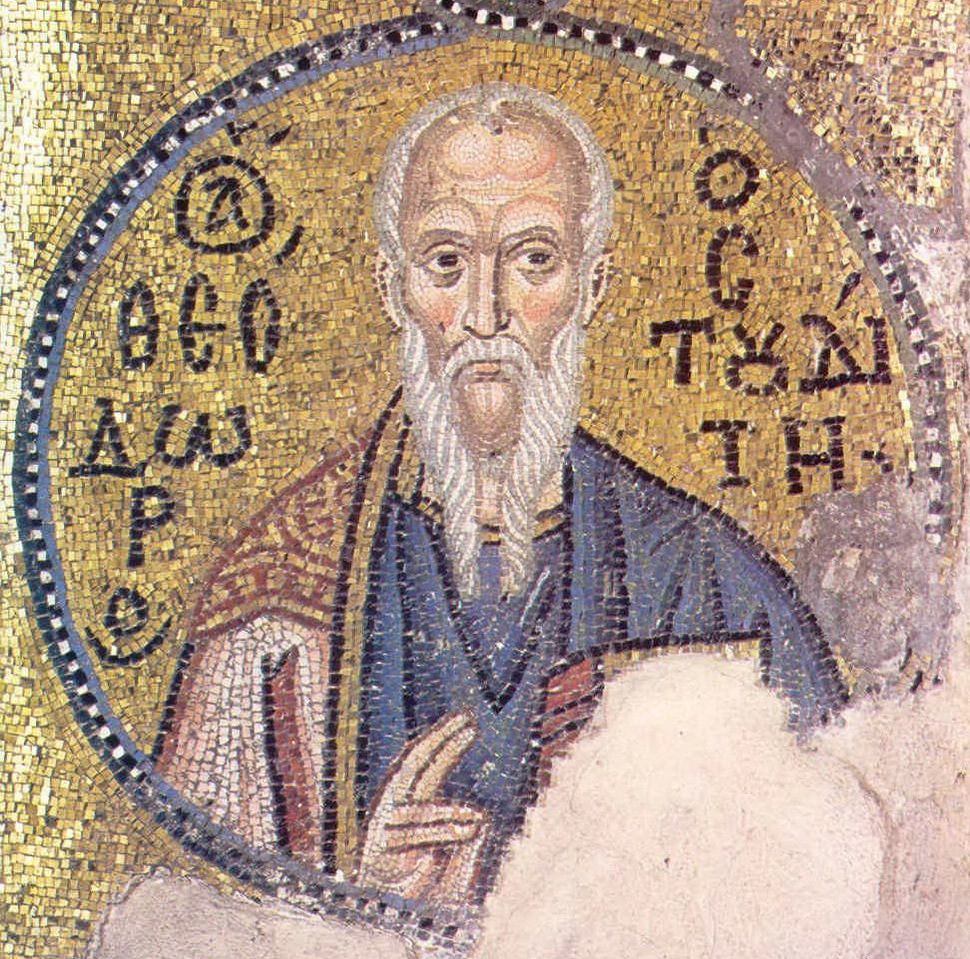| Monasteries of Daphni, Hosios Loukas and Nea Moni of Chios* | |
|---|---|
| UNESCO World Heritage Site | |
 | |
| State Party | |
| Type | Cultural |
| Criteria | i, iv |
| Reference | 537 |
| Region† | Europe and North America |
| Inscription History | |
| Inscription | 1990 (14th Session) |
| * Name as inscribed on World Heritage List. † Region as classified by UNESCO. | |
Nea Moni (Greek: Νέα Μονή, lit. "New Monastery") is an 11th century monastery on the island of Chios that has been recognized as a UNESCO World Heritage Site. It is located on the Provateio Oros Mt. in the island's interior, about 15 km from Chios town. It is well known for its mosaics, which, together with those at Daphni and Hosios Loukas, are among the finest examples of "Macedonian Renaissance" art in Greece.[1]
History
The monastery was built in the mid-11th century, by Byzantine emperor Constantine IX Monomachos and his wife, Empress Zoe. According to tradition, it is built on the location where three monks, Nikitas, Ioannes and Iosif, miraculously found an icon of the Virgin Mary, hanging from a branch of myrtle.[2] At that time, Constantine was exiled in nearby Lesbos, and the monks visited him and told of a vision according to which he would eventually become emperor. Constantine promised to build a church if this should come to pass. Indeed, in 1042, Constantine became emperor, and in gratitude began constructing the monastery, dedicated to the Theotokos.[2] The main church (the "katholikon") was inaugurated in 1049, and the complex finished in 1055, after Constantine's death.[3]
As a result of land grants, tax exemptions and other privileges, granted by Constantine and successive emperors,[3] the monastery prospered during the Byzantine period. It amassed substantial riches through the centuries and became one of the wealthiest monasteries in the Aegean. At its peak, around 1300, its estates covered one third of Chios and it is estimated that up to 800 monks belonged to it.[2] The subsequent Genoese domination reduced its wealth, but the monastery prospered again during the Ottoman era, when it was subject directly to the Patriarch of Constantinople, and enjoyed considerable autonomy. The late 16th century traveler Samuel Purchas recounts that it had 200 monks, and that "alone in all Greece they had the right to use bells." During the 17th century the number of monks decreased further, but recovered in the next century. The Patriarch of Jerusalem, Chrysanthos Notaras, and the French priest Fourmont, who visited the monastery in 1725 and 1729 respectively, commented on the large numbers of monks, the quantity of relics preserved, and the beauty of the church and its decoration.
The monastery's decline began only after the destruction of Chios by the Ottomans in 1822, during the Greek War of Independence. The monastery was sacked and looted, and never recovered its former glory. In 1881, an earthquake added further damage to the main church, leading to the collapse of its dome, while several other buildings, like the 1512 bell-tower, were destroyed.[3] In 1952, due to the shortage of monks, Nea Moni was converted to a convent. According to the 2001 census, it is inhabited by only three nuns.
Structures and architecture
The monastery complex covers an area of approximately 17,000 m2 and consists of the katholikon, two smaller churches (dedicated to the Holy Cross and to St Panteleimon) the dining hall ("trapeza"), the monks' cells ("kelia"), the reception hall or "triklinon" and underground water cistern ("kinsterna"). The complex is surrounded by a wall (the original Byzantine wall was destroyed in 1822), and in the northeastern corner stands a defensive tower, in earlier times used as a library.[2] In addition, outside the walls, near the monks' cemetery, there is a small chapel to St Luke.[3]
The katholikon is the monastery's central structure, dedicated to the Dormition of the Virgin Mary.[2] It is composed of the main church, the esonarthex and the exonarthex. The main church is of an octagonal shape, the so-called "insular" type, found in Chios and Cyprus. Although all three sections date to the 11th century, the main church suffered significant damage in 1822 and 1881, with the result that its current, rebuilt, form is different from the original. The bell tower was constructed in 1900, replacing an older one built in 1512.[3] Originally, the remains of the three founders were kept in the exonarthex, but most of these were destroyed during the sack of 1822.[2]
Along with the katholikon, the only remaining 11th century buildings are the partially ruined tower, the chapel of St Luke, the cistern and parts of the trapeza.[2] The cells, most of which are in a ruined state, date to the Venetian and Genovese periods. A small museum, opened in 1992, exists to the NW of the katholikon, housed in a renovated cell. The displayed artifacts date mostly from the latter 19th century.[4]

No comments:
Post a Comment